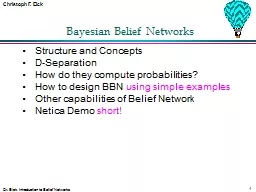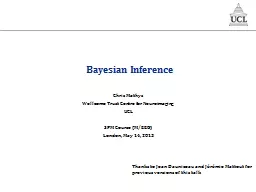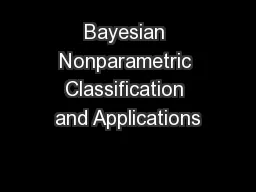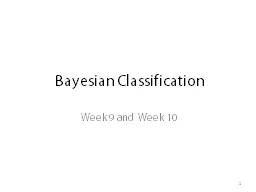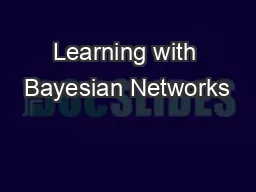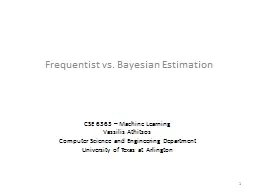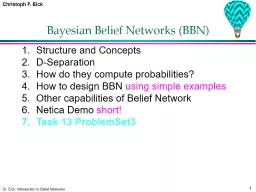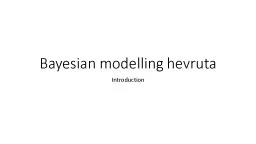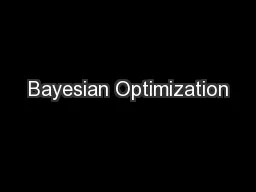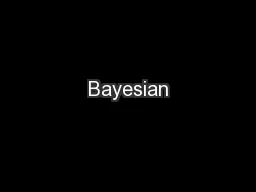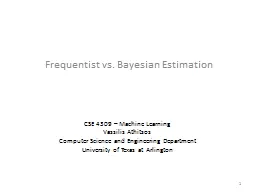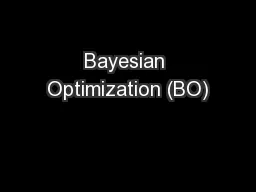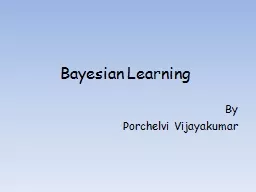PPT-Bayesian Belief Networks
Author : calandra-battersby | Published Date : 2016-03-06
Structure and Concepts DSeparation How do they compute probabilities How to design BBN using simple examples Other capabilities of Belief Network Netica Demo
Presentation Embed Code
Download Presentation
Download Presentation The PPT/PDF document "Bayesian Belief Networks" is the property of its rightful owner. Permission is granted to download and print the materials on this website for personal, non-commercial use only, and to display it on your personal computer provided you do not modify the materials and that you retain all copyright notices contained in the materials. By downloading content from our website, you accept the terms of this agreement.
Bayesian Belief Networks: Transcript
Download Rules Of Document
"Bayesian Belief Networks"The content belongs to its owner. You may download and print it for personal use, without modification, and keep all copyright notices. By downloading, you agree to these terms.
Related Documents

